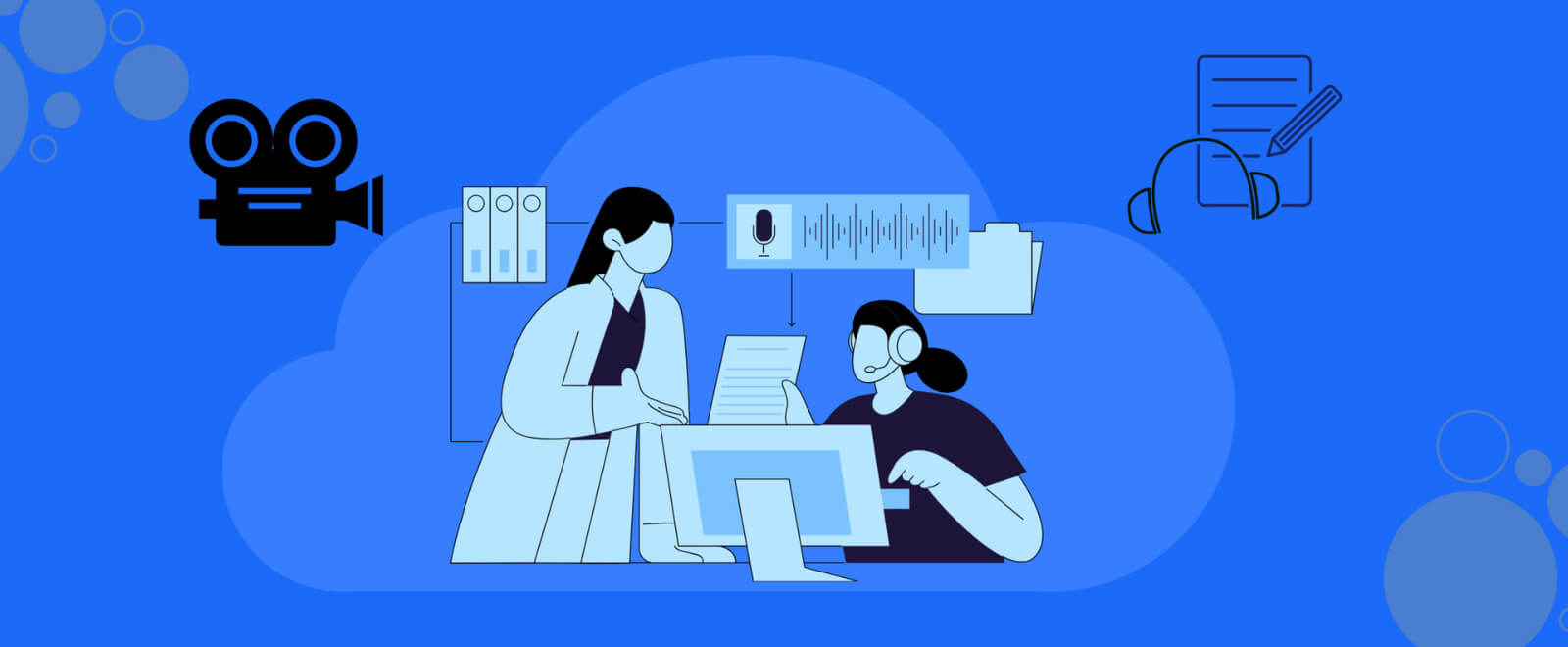‘Are you aware of homonyms?’
The close similarity between transcription and translation has often confused even the greatest minds. When they read these two terms together, they often mistake one for the other. However, they are not interchangeable terms; rather, they are leagues apart, each having its own importance and specific use. The common ground where they align well is their ability to ease communication between individuals and organizations. Moreover, they are also the driving force behind the success of content creators who yearn to expand their reach beyond geographical boundaries.
Yet, there’s a vast scope of transcription vs translation in this digital world. Let’s break it down one after the other.
What is Language Transcription
It’s difficult to imagine a modern world of information without the presence of transcriptions. To put it in simple words, language transcription is the process of converting spoken language into written text. It involves capturing everything spoken, including words, sounds, and non-verbal cues.
Types of Transcription
Depending on the type of field, transcriptions are further categorized to serve an individual effectively. These different types focus more on either the readability and the conciseness of the discussion or on its accuracy.
Edited Transcription
It is the simplest and most common type of transcription that solely focuses on the document's readability. Here, a professional transcriptionist would prioritize a smooth flow of words in your document while correcting grammatical errors and breaking down complex sentences or filler words.
Verbatim Transcription
Unlike most transcriptions, verbatim transcription would also pull in all the pauses, filler words, and non-verbal cues, such as sighs and laughter. While these details may sound futile to some, they are of paramount importance in legal proceedings and research interviews.
Intelligent Verbatim Transcription
Are you looking for a middle ground between Edited transcriptions and Verbatim transcriptions? This type of transcription is ideal for highlighting the conciseness of the text and the true intent of the participant’s voice.
Depending on the field, the type of transcriptions begins to carry more weightage. Below are a few of the fields where transcriptions are used widely.
Legal
The legal field requires the utmost accuracy in terms of transcripts of court proceedings. Many professionals use Verbatim transcription to capture every detail in depositions and proceedings.
Research
Transcriptions are the ally of every researcher who is prone to qualitative research data, interviews, and a lot of information.
Academic
Education has seen a huge boost as transcriptions are introduced for notes and group discussions while making things easier for students.
It’s time we dive deeper into the subject of transcription vs translation while looking at the other side of the story.
What is Translation
Unlike transcription, translation is all about the process of converting written text from one language to another with the effort of preserving the original meaning, context, and tone. This process can be divided into three different stages.
Source Text Analysis
The first stage of translation is to meticulously understand the content and the context in which it is used.
Translation
Once the foundations are established, the second stage involves converting the text into the preferred language.
Editing & Proofreading
Translation requires an accuracy and fluency that goes beyond the word perfect.
There are several types of translations that are categorized based on the field.
Literary Translation
Translating literature, including novels, books, poems, etc.
Technical Translation
Translating technical documents, manuals, and guides.
Legal Translation
Translating legal documents, contracts, agreements, and so on.
Unlike the above-mentioned industries, translation is widely used in businesses for multilingual meetings, marketing materials, and even in the healthcare and educational industries.
It’s time we zoom into the core aspect of this subject.
Key Difference Between Transcription and Translation
The idea of transcription vs translation has an inverse relationship that collides at several points. Here are a few of the key differences.
Nature of work
As we’ve discovered before, transcription is all about converting spoken language to written text, while translation is about converting the written text from one language to another.
Skills Required
If we’re talking about a manual approach, transcription involves proficiency in listening, fast typing, and attention to detail. On the other hand, translation requires excellence in source and target languages, cultural knowledge, and writing skills.
Tools Used
When it comes to transcriptions, professionals often look in the direction of AI-powered tools, such as Konch AI for accurate & high-quality transcripts. Meanwhile, in translations, professionals look for translation memory software, CAT tools, dictionaries, etc.
When to Use
Transcriptions are used in meetings, interviews, and lectures to record the spoken content in writing. Translation is required when communication extends beyond a single language, such as in marketing.
With these key differences, it’s now imperative to shift our perspectives toward similarities.
Similarities Between Transcription and Translation
While there might be more content for transcription vs translation, the scarce number of similarities is more integral than the differences for users.
Converting One Form to Another
Both aspects involve converting language from one form to another, i.e., spoken to written in transcription and a written language to another language in translation.
Bridging Communication Gaps
The primary aim of transcription and translation is to make the content accessible to a wide audience and overcome all language barriers.
Increasing Accessibility
With a written record of spoken languages or text translations, these services enhance the accessibility for people who speak in different languages or prefer written content.
Conclusion
On the surface, it’s all about transcription vs translation; however, the reality is that these services are vital in today’s digital world, each having its unique purpose. In the near future, there will be high speculation about automated tools offering both these services under the same platform. As long as there’s a need for transcription, there’s always going to be a demand for translating the transcripts into different languages.
FAQs
1. Can translation and transcription be combined?
Yes, you would often find professionals combining them, especially in multilingual meetings, where the spoken content has to be transcribed and translated simultaneously.
2. Can transcription be used for non-verbal sounds?
Yes, out of the different types of transcriptions, verbatim transcription includes non-verbal sounds like laughter, pauses, etc.
3. Can automated tools fully replace human transcription and translation?
The birth of automated tools has led to a significant increase in speed and accuracy. However, irrespective of their wide use, there’s always going to be a need for human oversight to ensure a nuanced accuracy.
4. How long does it typically take to transcribe an hour of audio?If you take the manual approach, it typically takes four to six hours. However, if you use automated and reliable tools, such as Konch AI, you can expect the results within minutes.




